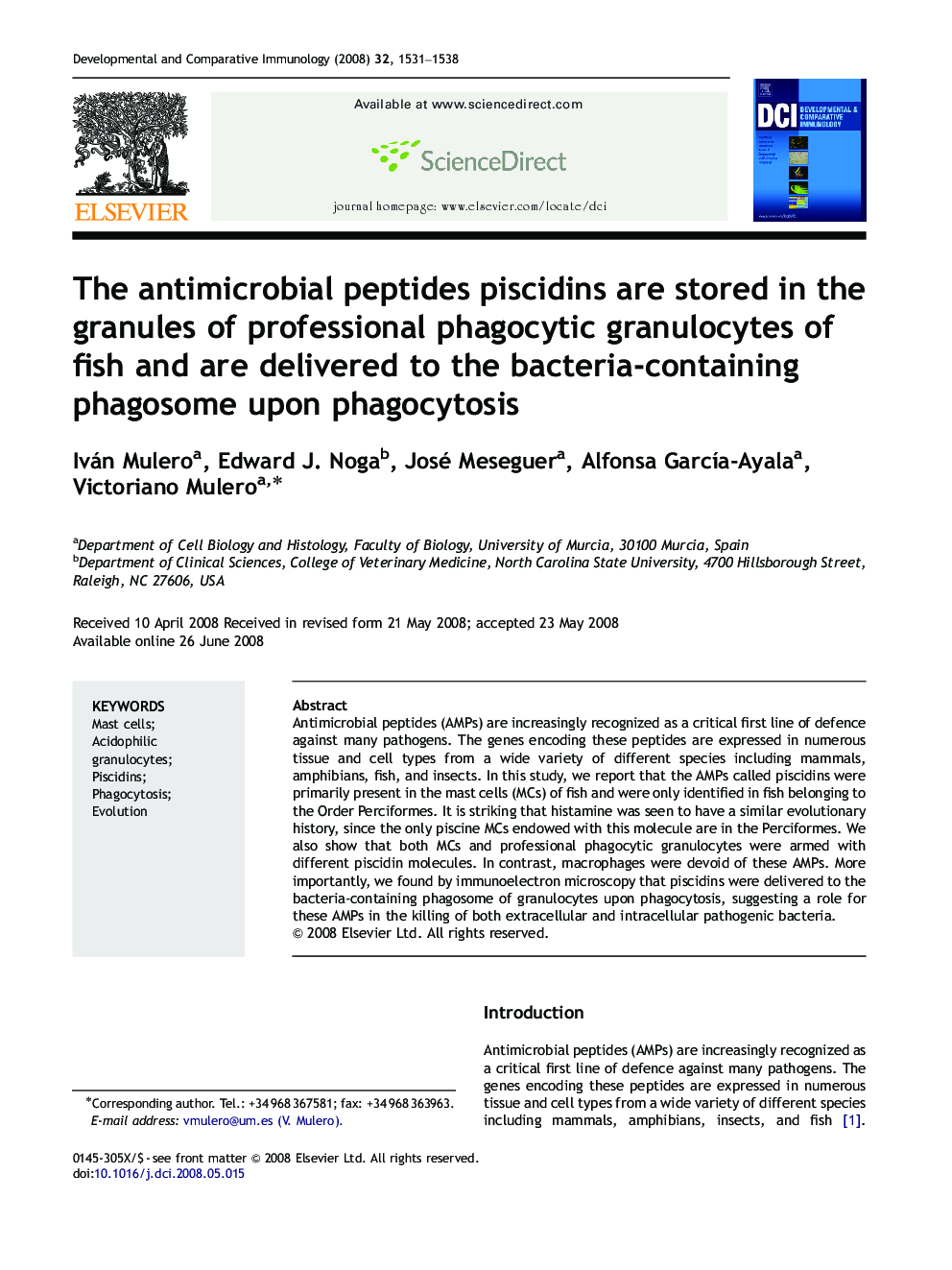| Article ID | Journal | Published Year | Pages | File Type |
|---|---|---|---|---|
| 2430075 | Developmental & Comparative Immunology | 2008 | 8 Pages |
Antimicrobial peptides (AMPs) are increasingly recognized as a critical first line of defence against many pathogens. The genes encoding these peptides are expressed in numerous tissue and cell types from a wide variety of different species including mammals, amphibians, fish, and insects. In this study, we report that the AMPs called piscidins were primarily present in the mast cells (MCs) of fish and were only identified in fish belonging to the Order Perciformes. It is striking that histamine was seen to have a similar evolutionary history, since the only piscine MCs endowed with this molecule are in the Perciformes. We also show that both MCs and professional phagocytic granulocytes were armed with different piscidin molecules. In contrast, macrophages were devoid of these AMPs. More importantly, we found by immunoelectron microscopy that piscidins were delivered to the bacteria-containing phagosome of granulocytes upon phagocytosis, suggesting a role for these AMPs in the killing of both extracellular and intracellular pathogenic bacteria.
